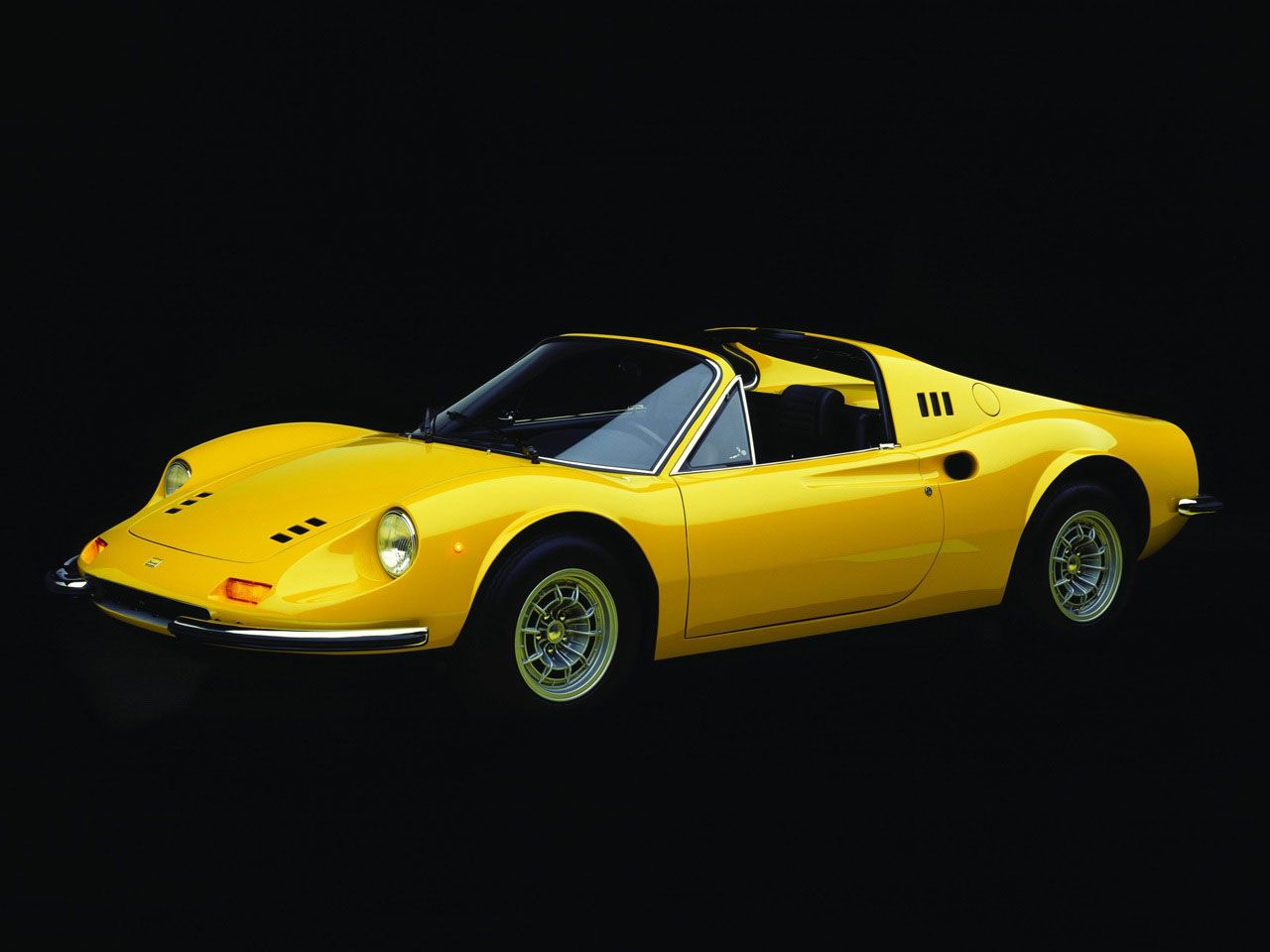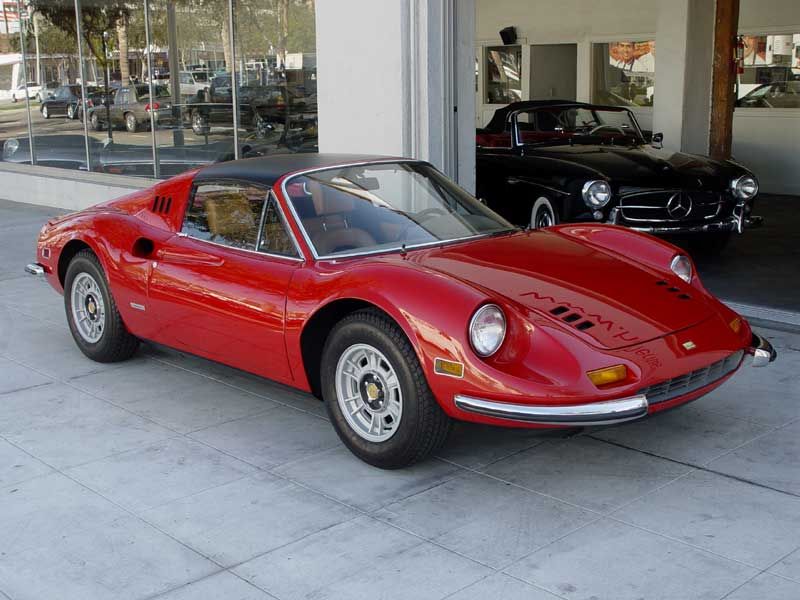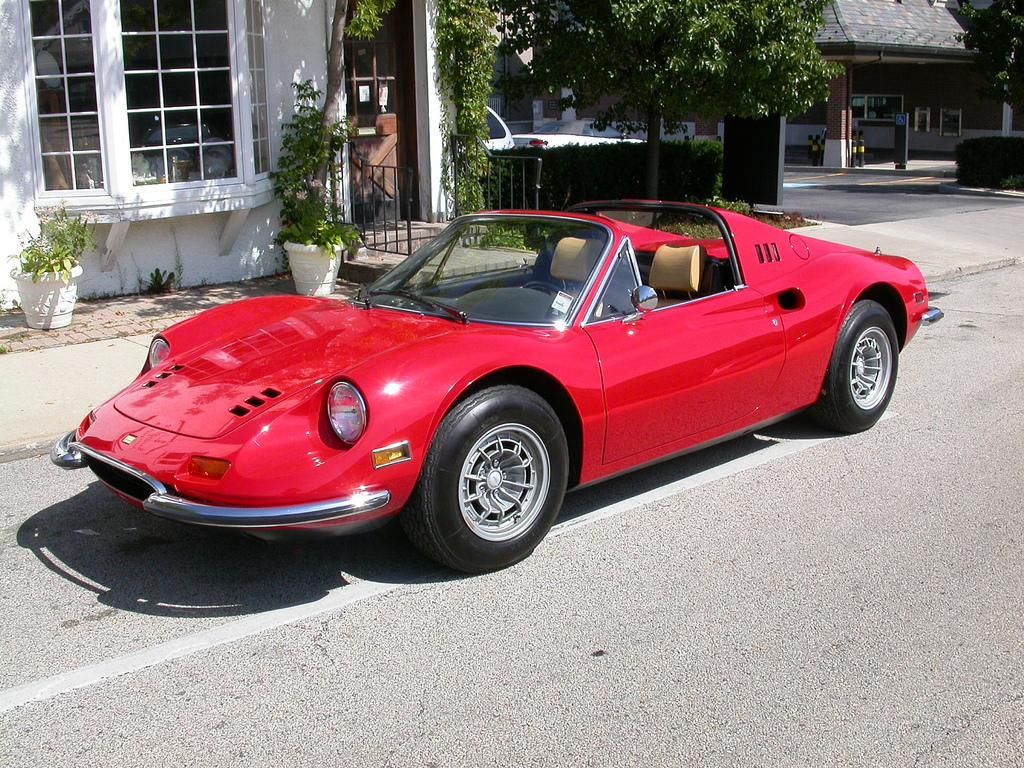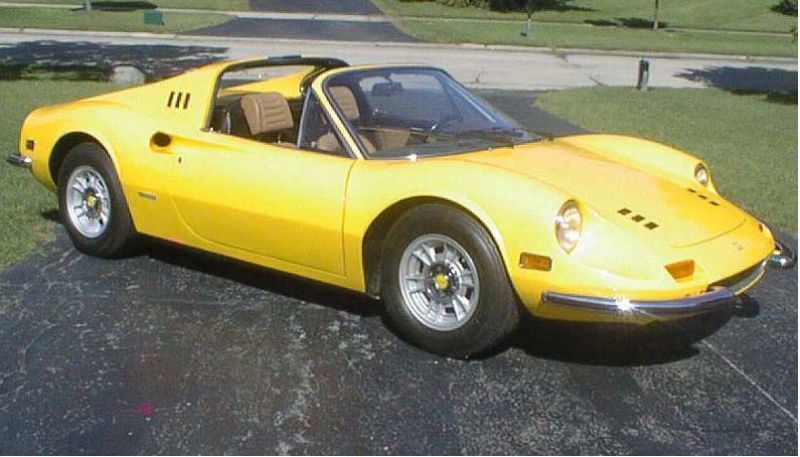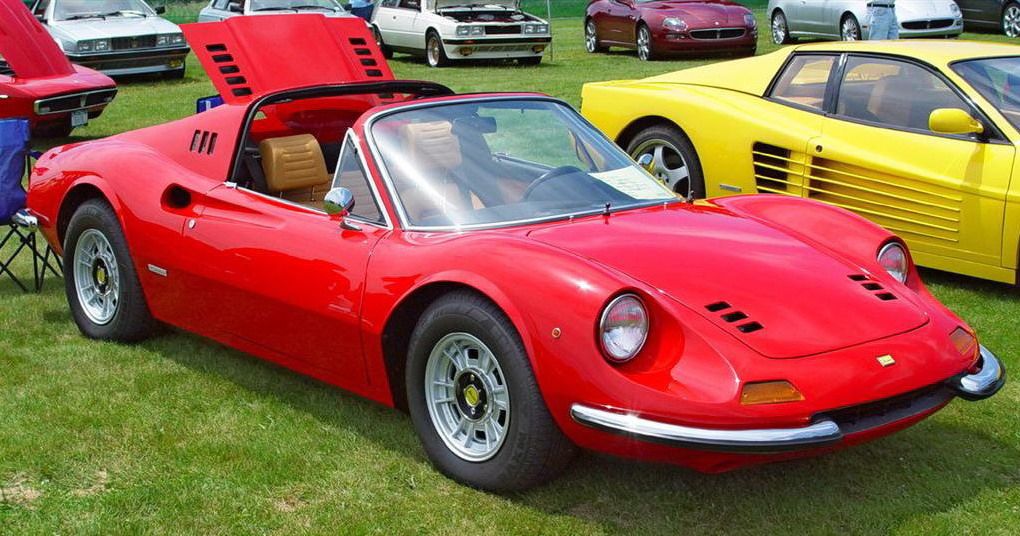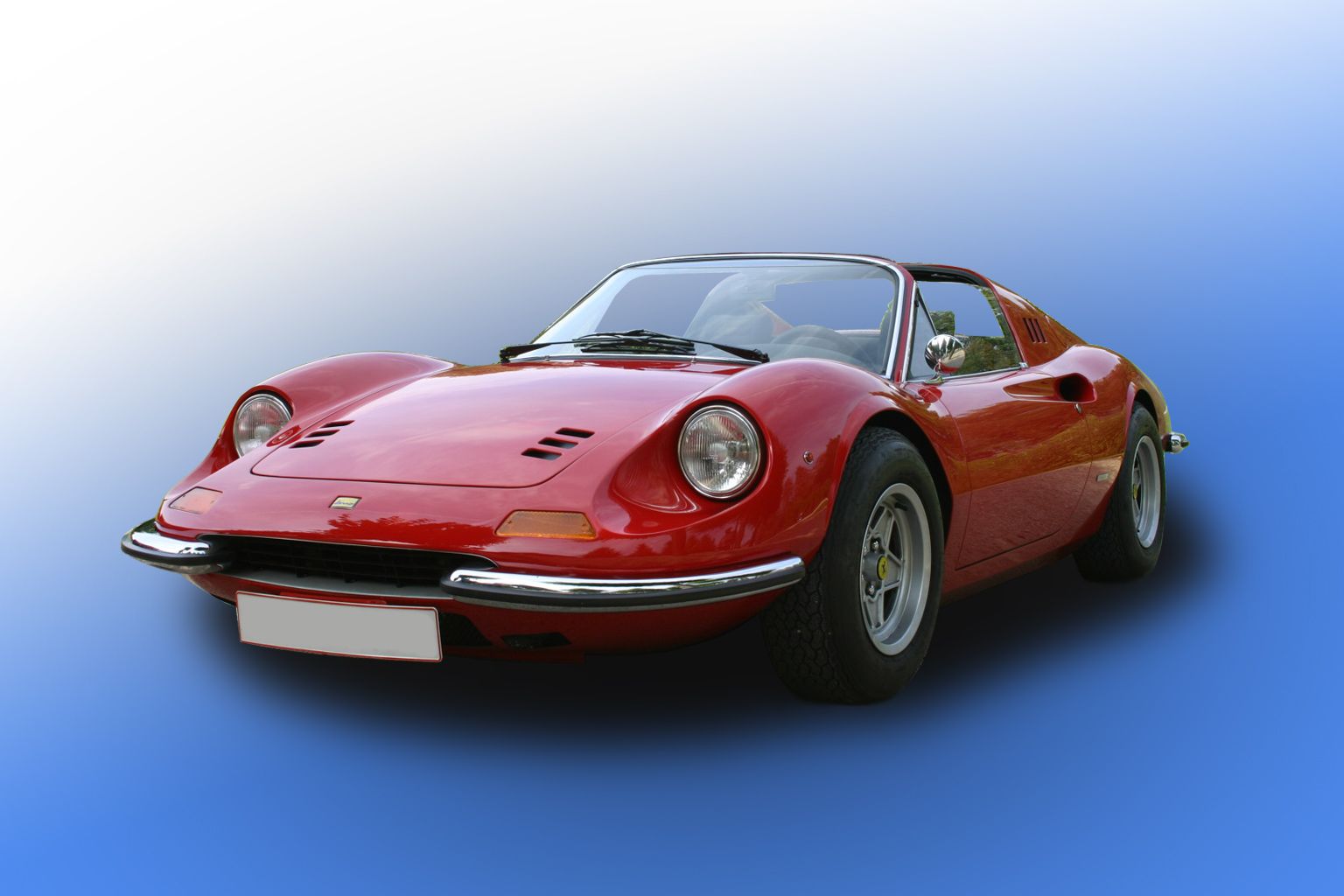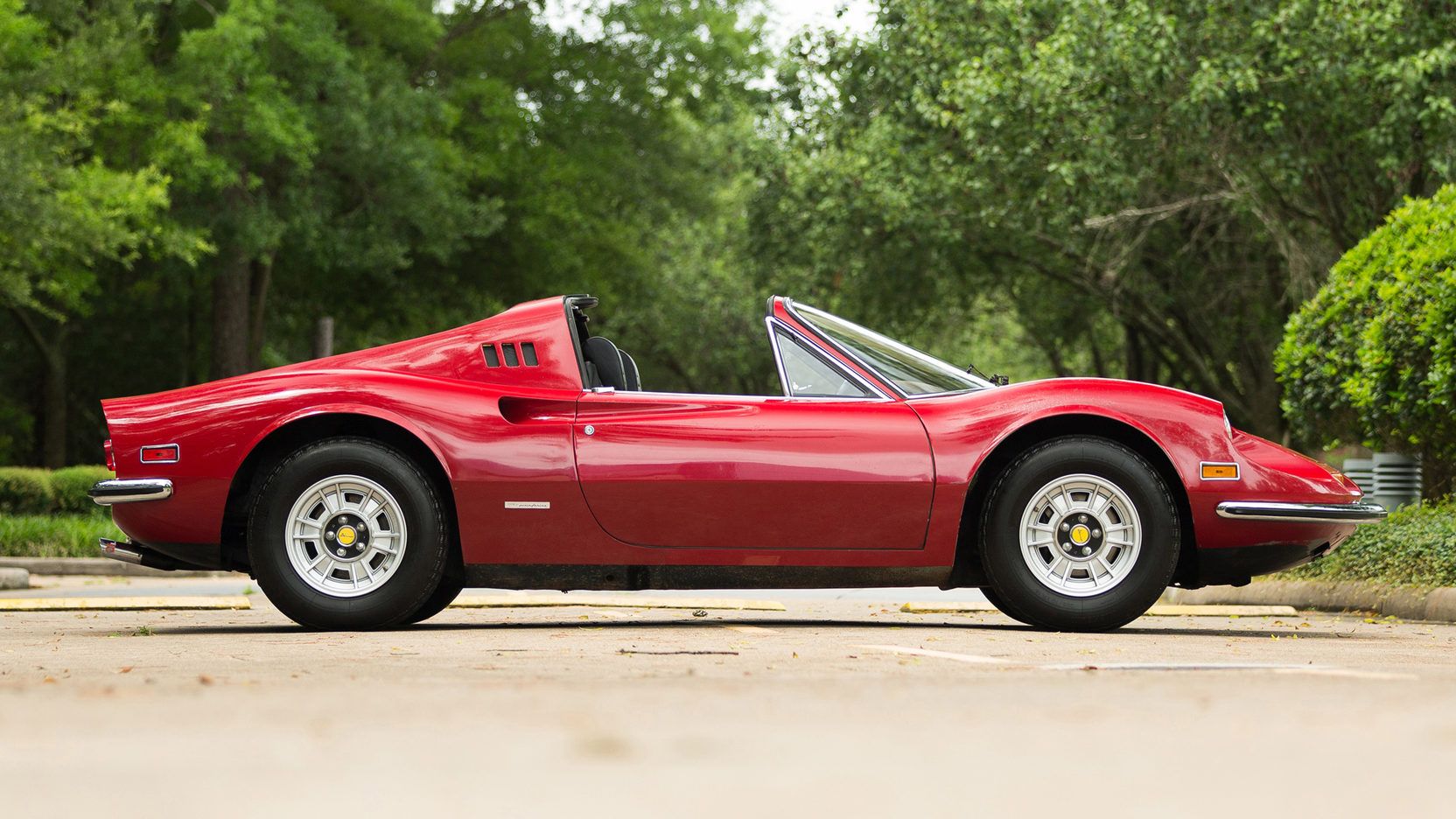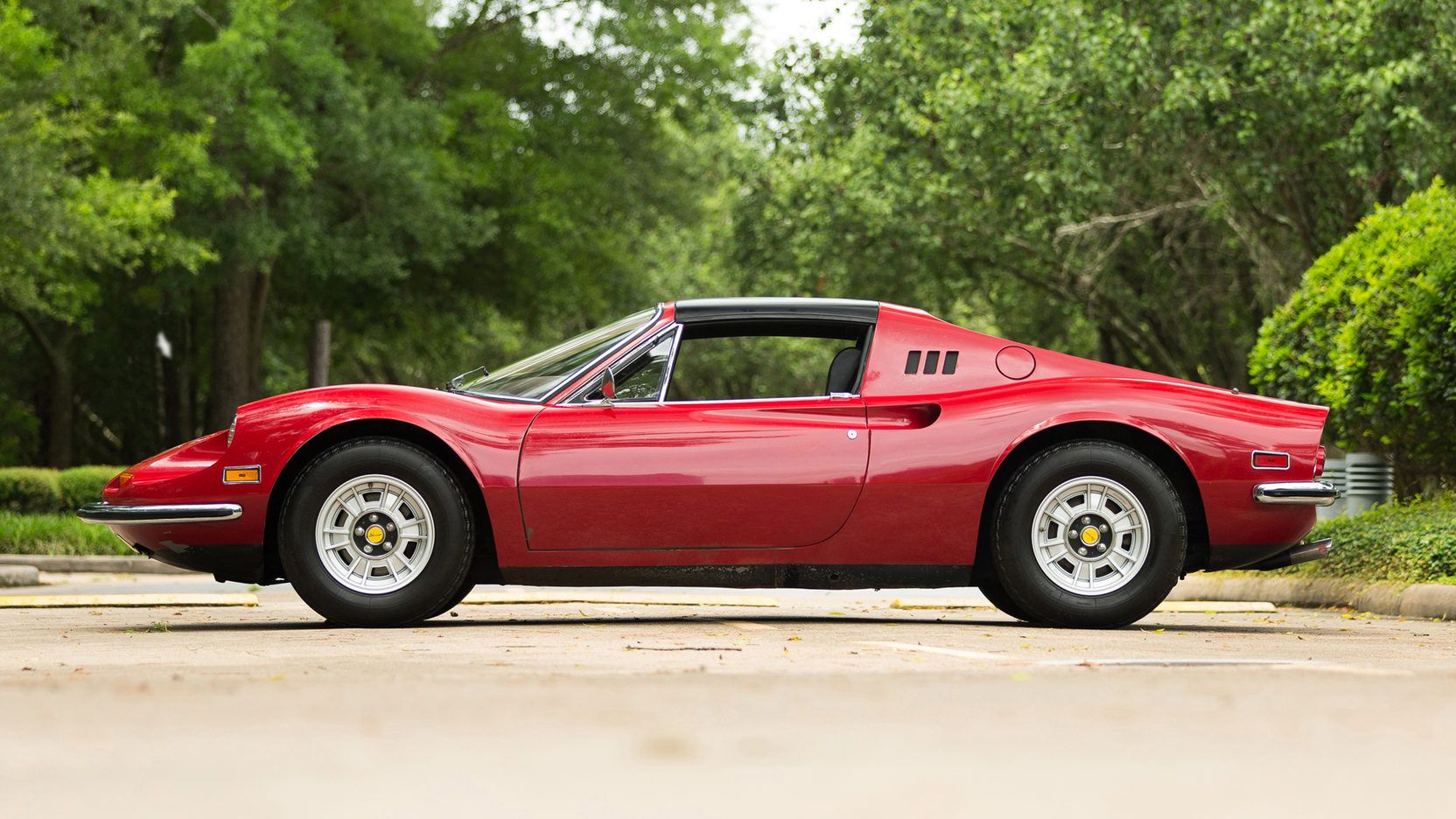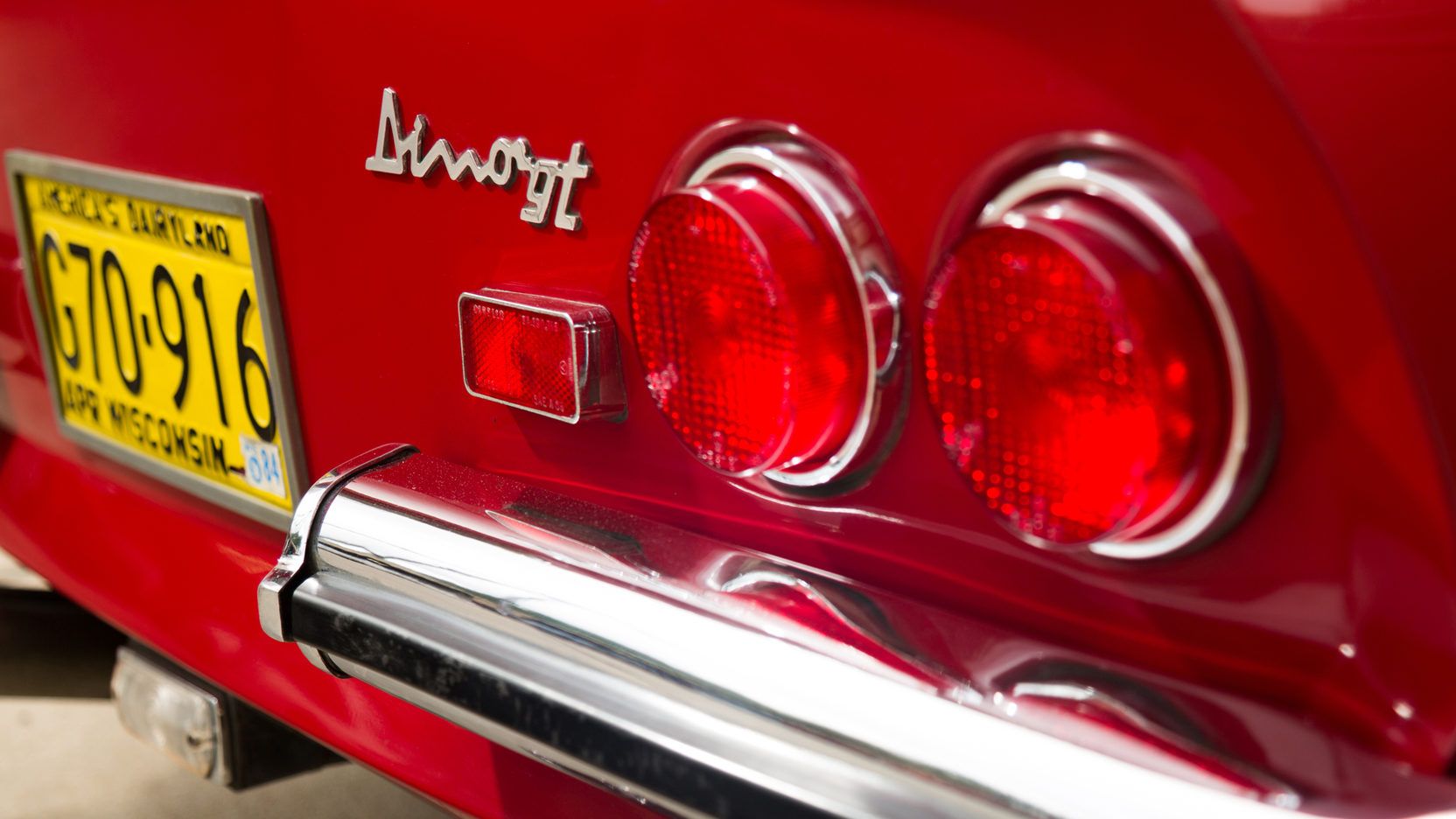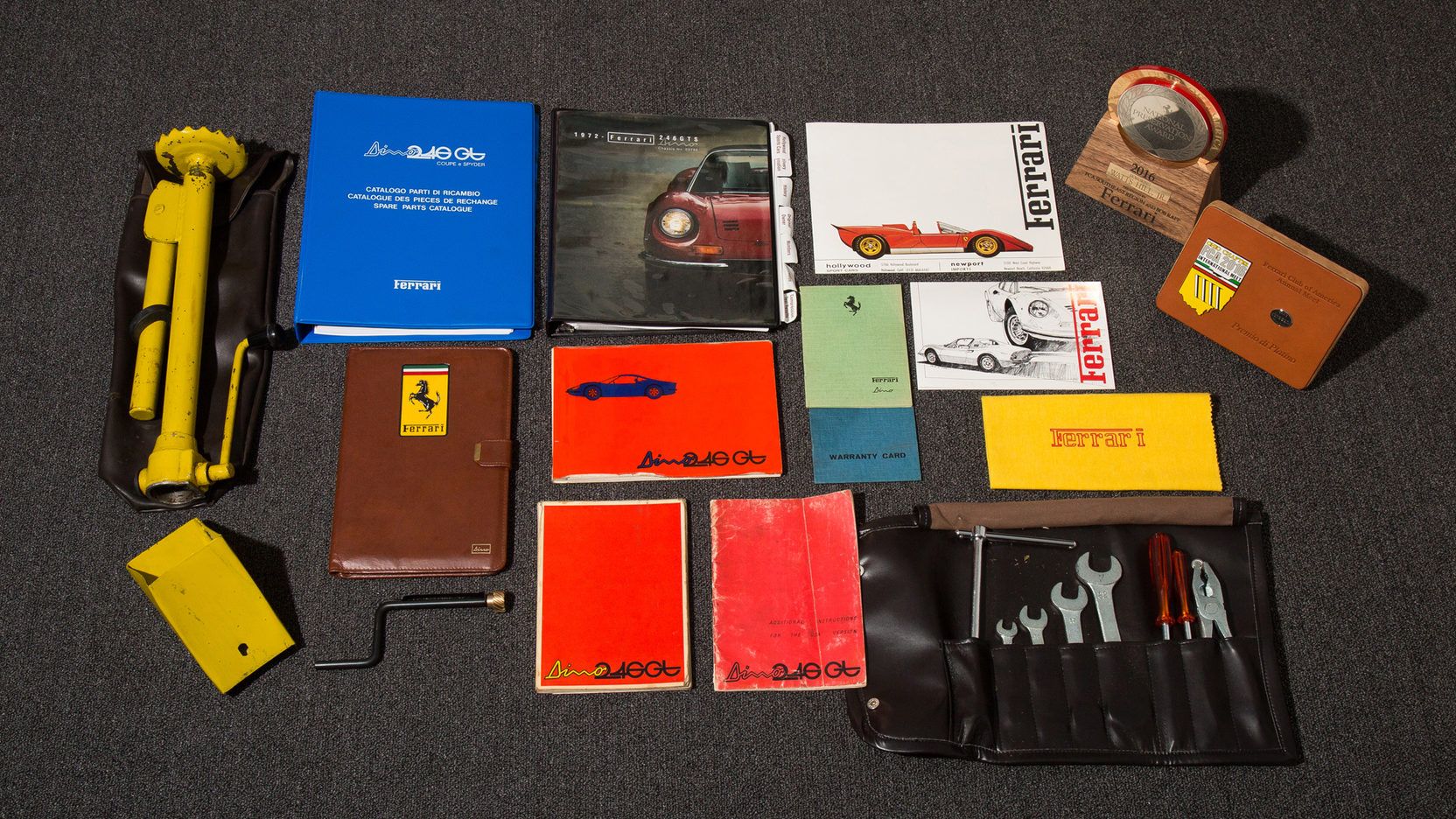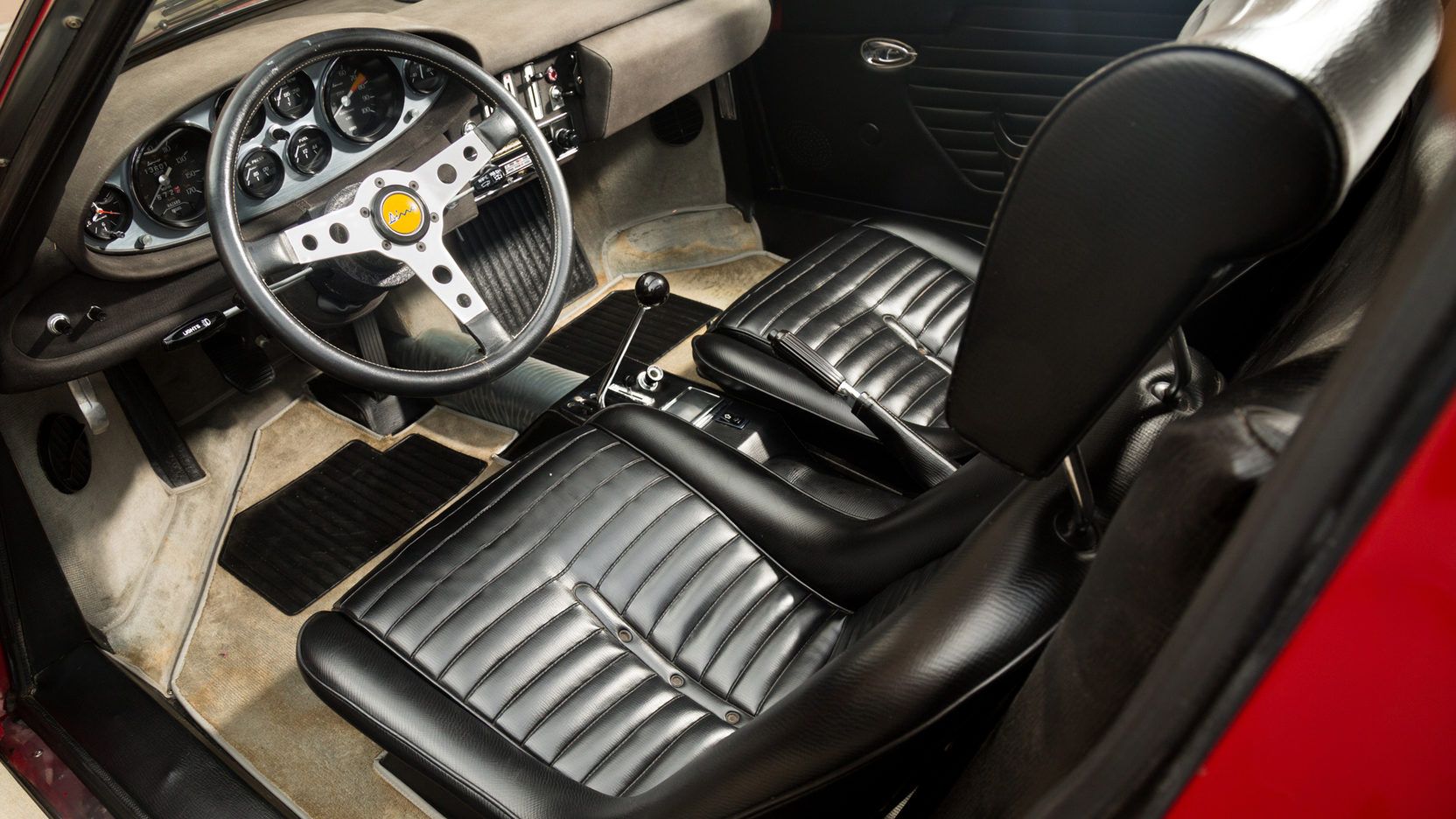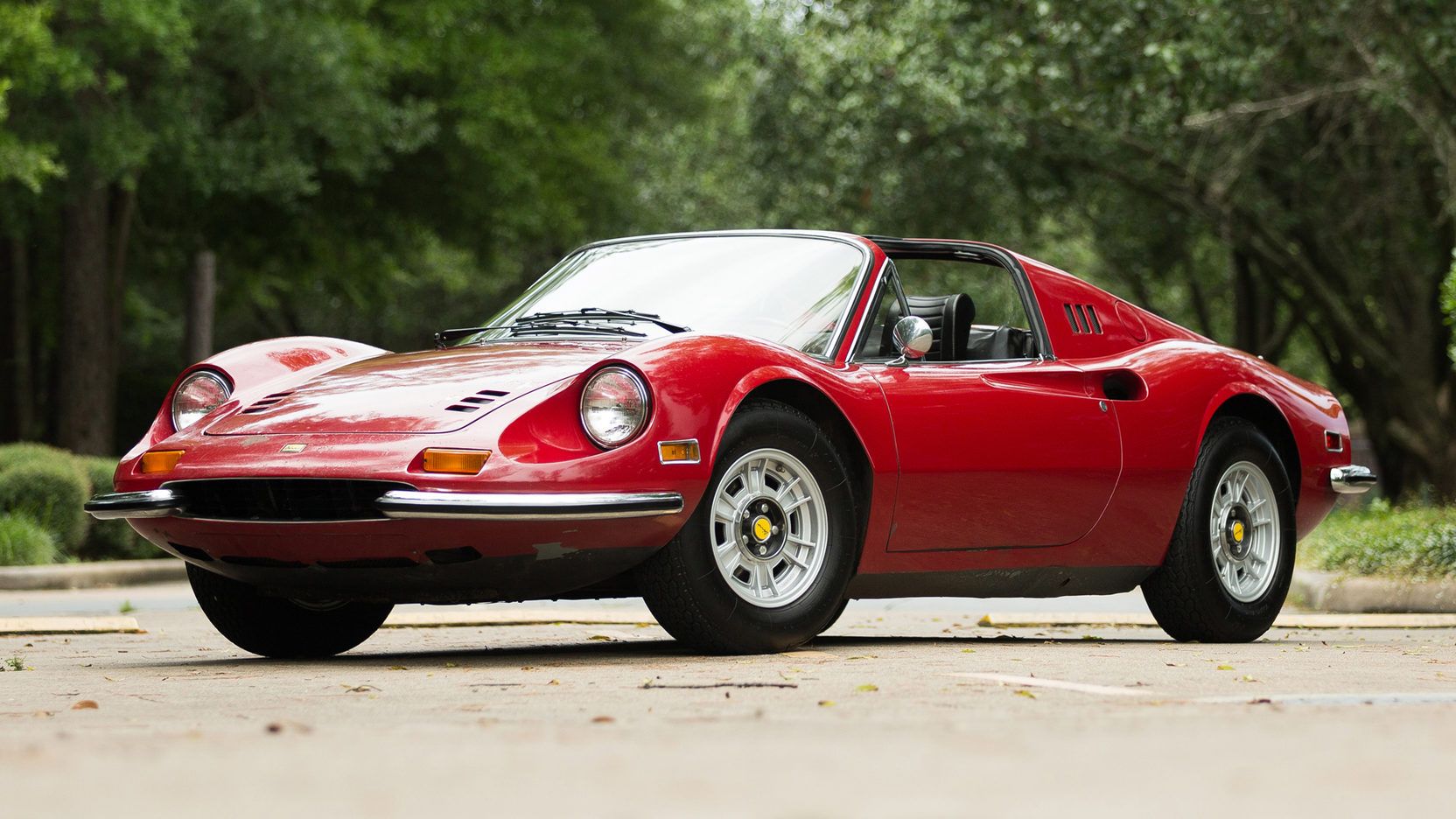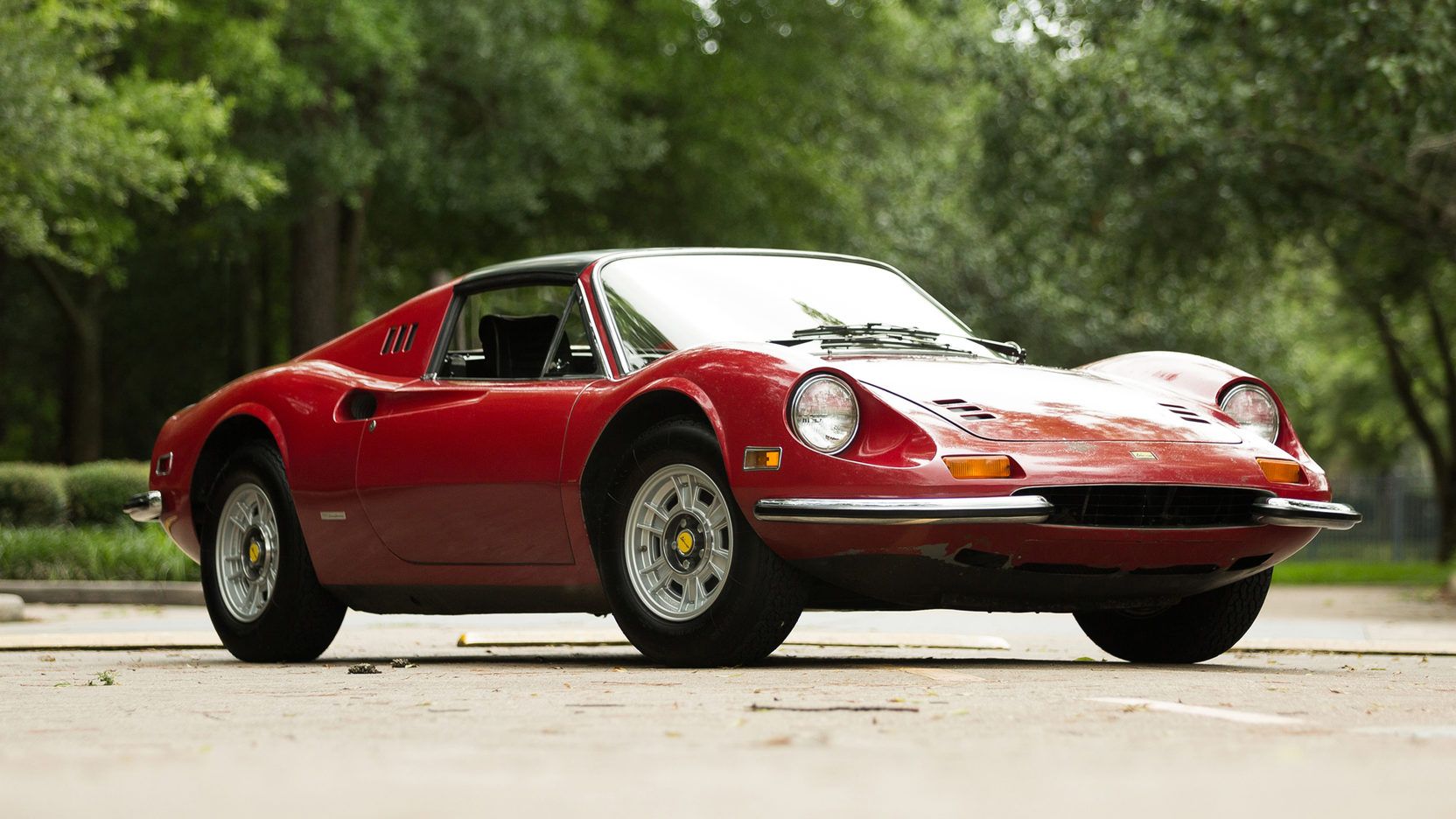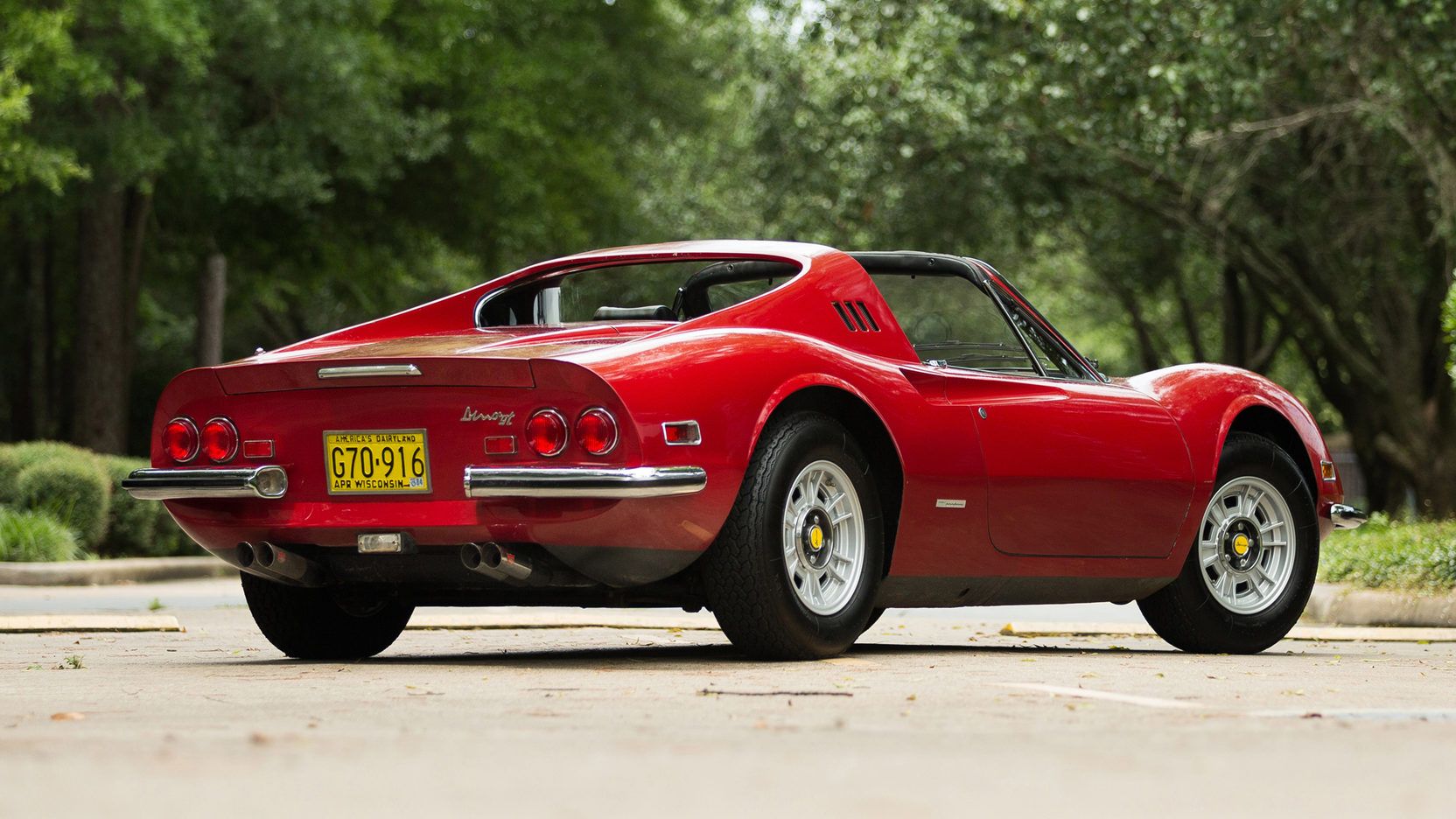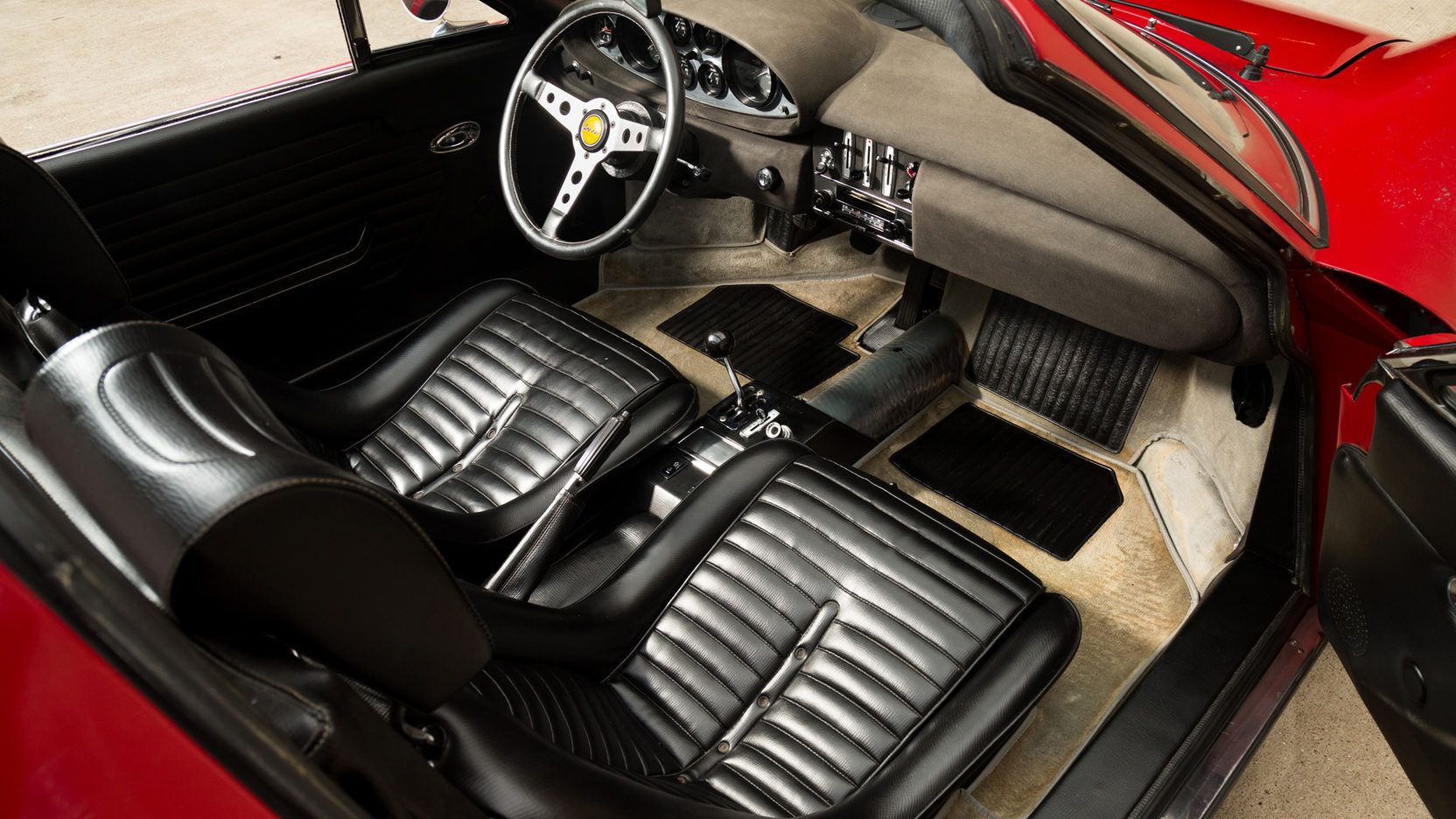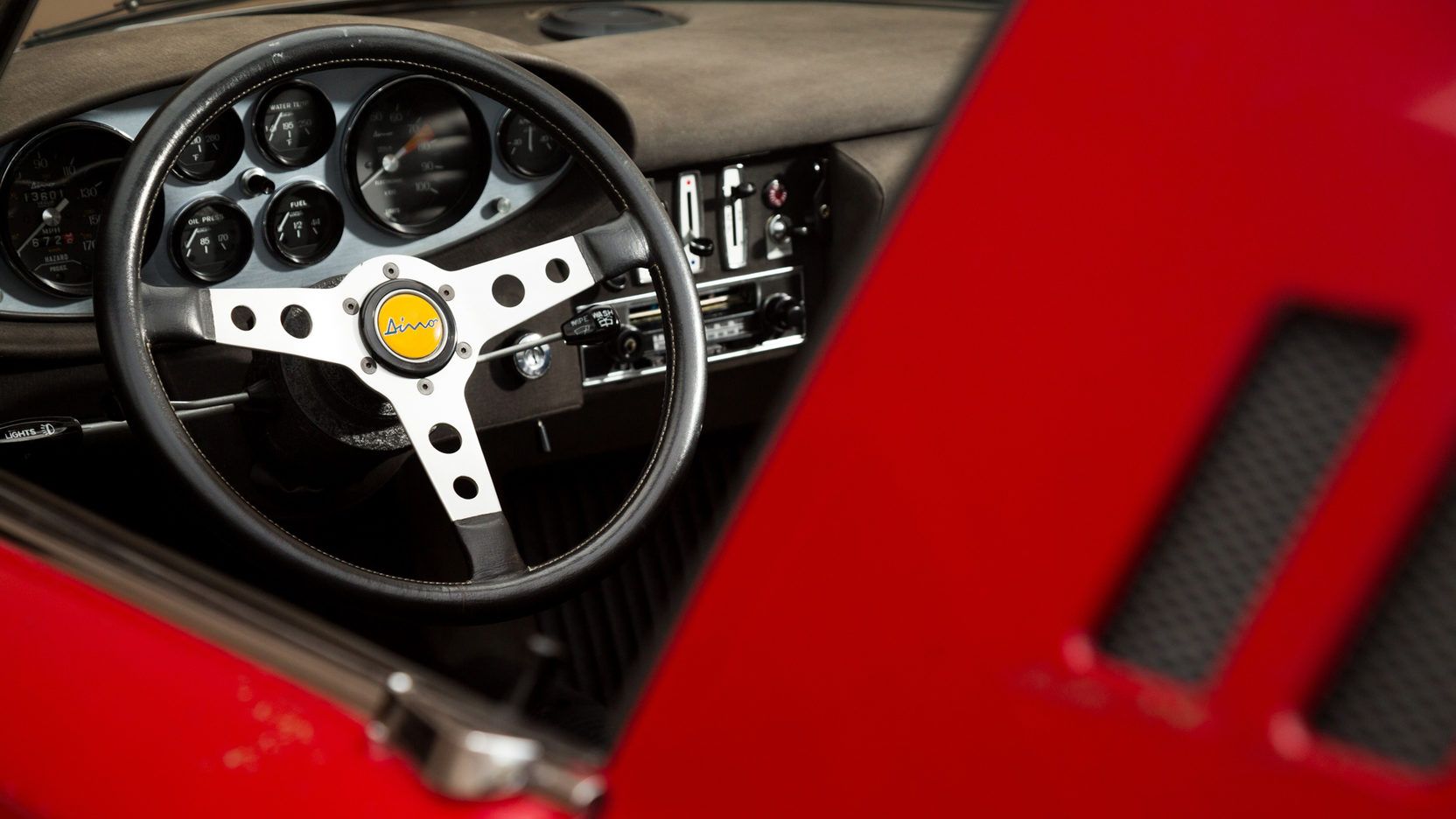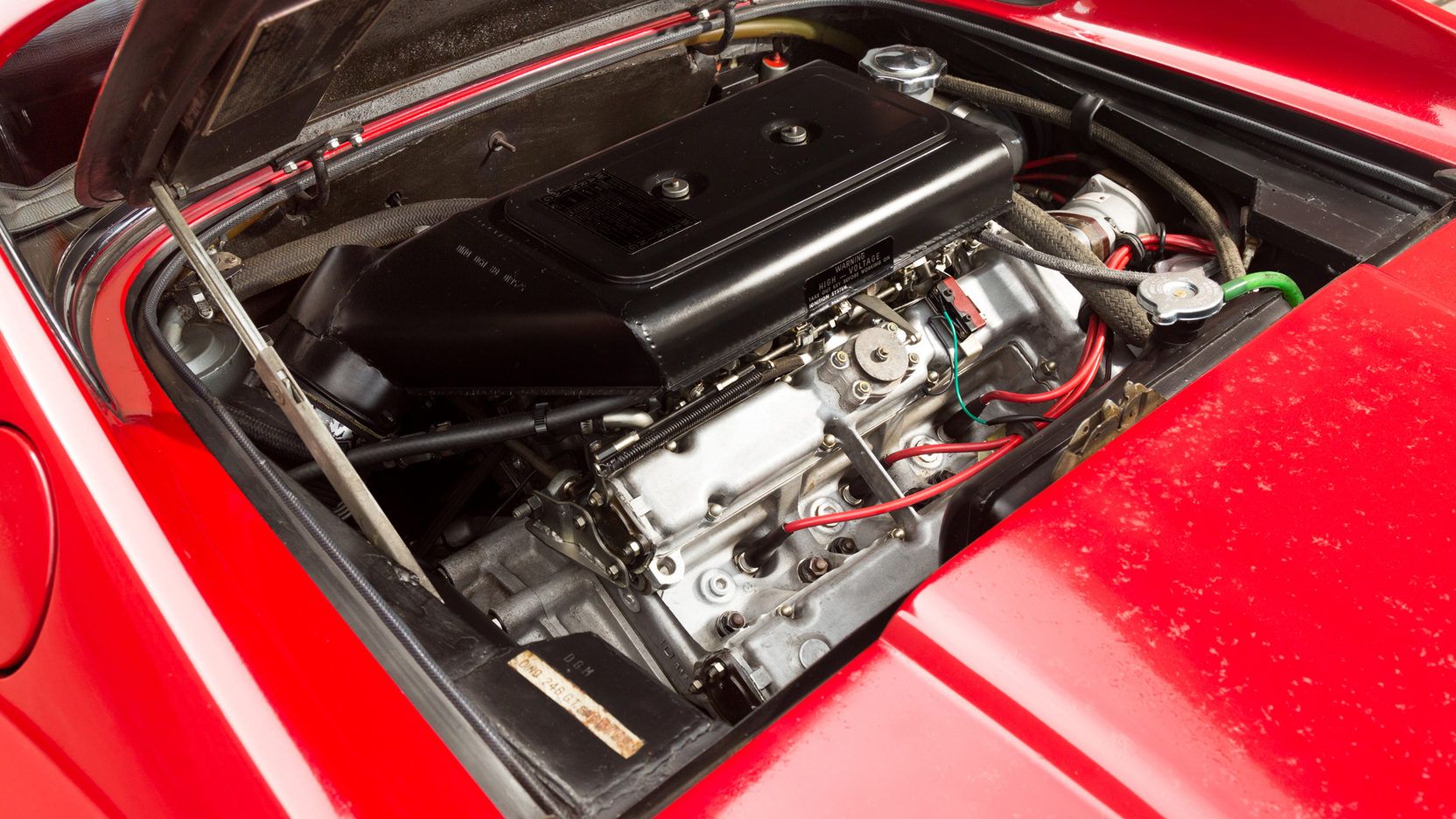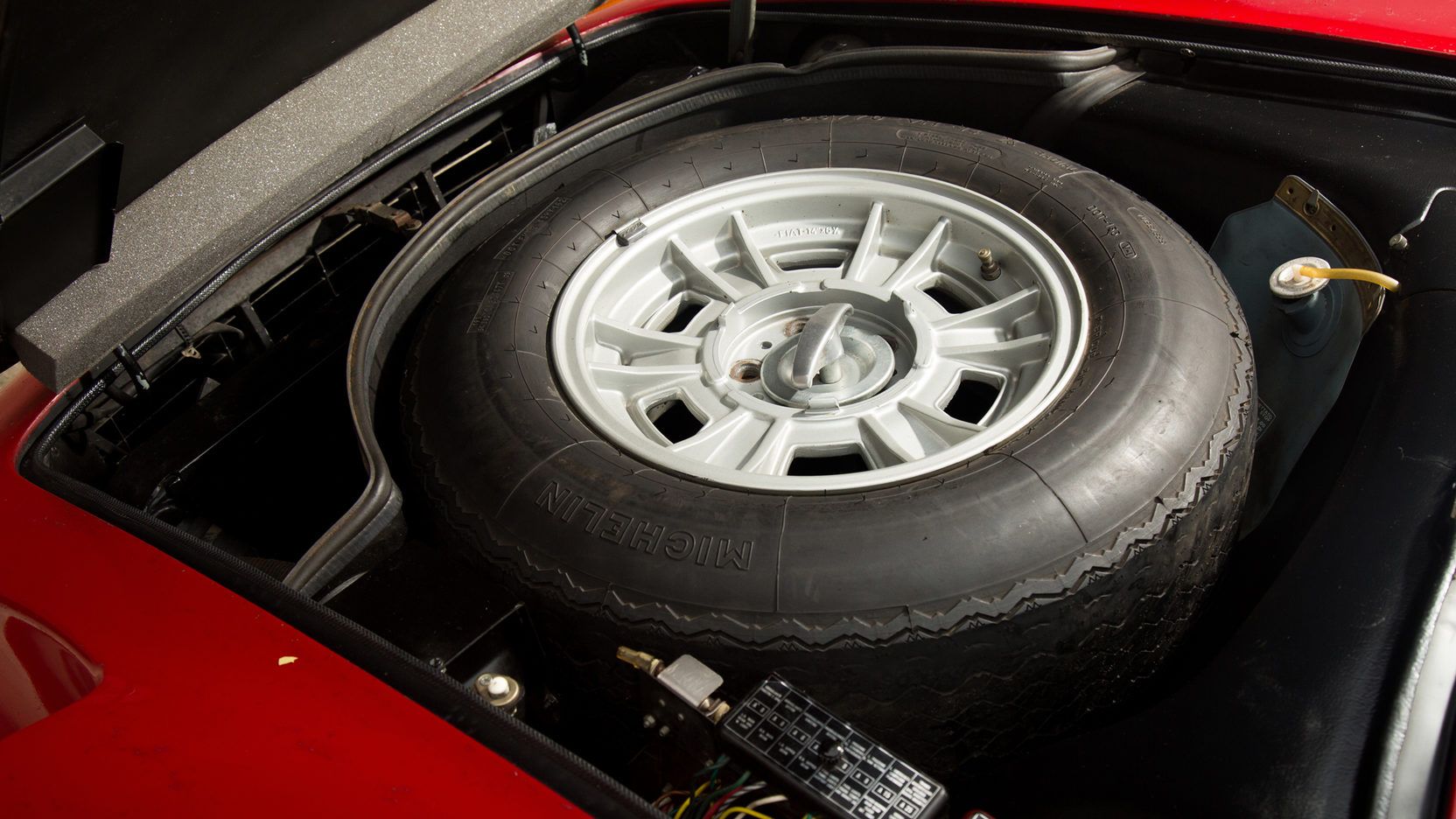When it was first built, the rear/mid-engine Dino sports car promised the same thrilling experience behind the wheel as any other machine with a Prancing Horse badge on the nose, but for a significantly lower price of admission. By the time the Dino 246 GT rolled out of Maranello, it was more than obvious that that mission was a complete and utter success. As such, a roofless iteration was quickly drafted up, and thus, the Dino 246 GTS was born. All the important bits, like the 2.4-liter V-6, independent suspension, and drop-dead gorgeous styling remained unaltered, but up top, you could find an additional 300 miles of blue-sky goodness.
These days, the Dino is one of the most sought-after Ferrari models on the planet, with some examples of the 246 GTS easily breaking the half-million dollar mark. The car is a wonderful thing to behold, and stands as a critical milestone in Ferrari’s long history.
Continue reading to learn more about the Ferrari Dino 246 GTS.
1972 - 1974 Ferrari Dino 246 GTS
- Make: Array
- Model: 1972 - 1974 Ferrari Dino 246 GTS
- [do not use] Vehicle Model: Array
History And Background
Between 1968 and 1976, Ferrari created a series of vehicles that looked, felt, and drove like a Ferrari, but were completely devoid of any official Ferrari branding. Dubbed “Dino,” these sports cars offered a rear/mid-engine layout, RWD handling, and seductive styling – all very Ferrari-esque characteristics. However, the powerplants used in the Dino models had less than 12 cylinders, and the price tag was more in line with the Porsche 911 than the top-of-the-line Prancing Horses.
The idea was to take on Stuttgart’s superstar with something more affordable than the models in Ferrari’s lineup at the time, and the separate Dino branding was created to keep the high-end Ferraris on a mental pedestal for consumers.
The name came from Enzo Ferrari’s son, Alfredo “Dino” Ferrari, who died in 1956 at the age of 24 from muscular dystrophy. The model naming conventions were used to identify the engine used, with the first two numbers announcing the displacement (2.4-liters), and the third number announcing the number of cylinders (V-6).
The first Dino road car was the 206 GT, which got 178 horsepower, an aluminum body, fully independent suspension, and four-wheel disc brakes. Roughly 152 were built over the course of the short production run, which lasted between 1968 and 1969.
Folks loved it, but demanded more output. In response, Dino released the 246 GT in 1969, equipping it with a larger, more powerful six-cylinder engine, bigger dimensions, and a steel body to curb production costs.
The market very much approved, and as a result, production numbers of the 246 GT far exceeded those of the 206 GT.
The public was enthralled, lauding the Dino for its looks and driving prowess. On the heels of the 246 GT coupe, Dino released a targa variant – the 246 GTS, which debuted in 1972 at the Geneva Motor Show. While already a success, the GTS further cemented the 246’s position as one of the greatest Ferraris ever built.
Dino built the 246 in a variety Series, which minor changes made between different iterations. The GTS was part of Series III, which came late in the model’s production run. Unique to the Series III cars were options like flared wheel arches and seats similar to those used in the Ferrari Daytona, earning it the nickname “Chairs and Flares.”
The Dino 246 was discontinued in 1974, and was succeeded by the Dino 308 GT4 2+2.
Exterior
Responsible for the original 206 exterior styling was Pininfarina’s Leonardo Fioravanti, the same pen that crafted the Ferrari Daytona, Ferrari F40, Ferrari P5 and P4, and several other Prancing Horse legends. Scaglietti was tasked with putting it all together.
The 246 is quite close in appearance to its predecessor, but dimensionally, it gained an extra 2 inches in the wheelbase. The height, however, is identical.
The GTS model’s targa top was created as a direct answer to the 911 Targa. However, the targa design was originally used on the Surrey-Top Triumph TR4, with both the Porsche and Ferrari following the British model’s example.
Unique to the 246 GTS were metal panels that replaced the rear quarter windows, offering three rectangular vents in both sides of the car, and folding up and over the rear glass like a large roll bar.
The 246 GTS was offered with optional wheel arches similar to those used in Group 4 (Group 4 was a set of regulations for GT and rally racing under FIA homologation that lasted until 1983, at which time it was replaced by the infamous Group B regulations). The wheels were also changed to the wider, four-bolt, sand-cast Campagnolo alloy wheels, which measured 7.5-inches in width and offered different styling compared to the old five-bolt Cromodora alloy wheels that came before.
Unique to U.S.-spec cars were square corner markers in the front fascia, as opposed to slanted lights in the standard spec car.
To my eye, the 246 GTS manages to take the original Fioravanti design to new, unprecedented heights. Take away that roof section, and the whole thing comes alive, somehow gaining an even sportier appearance, like an open-top Le Mans competitor. Paired with that wide, be-chromed nose, swoopy fenders, wavy shoulder line, and pert rear end, it becomes immediately obvious why this car is so darn desirable.
|
Wheelbase |
2,340 mm (92 inches) |
|
Length |
4,235 mm (167 inches) |
|
Width |
1,700 mm (67 inches) |
|
Height |
1,135 mm (45 inches) |
Interior
Compared to the stunning exterior, the cabin space of the 246 GTS is a little bit on the bland side. It’s not sleek and groundbreaking, but it gets the job done.
The dash features an oval gauge pod behind a giant, three-spoke steering wheel. Eight individual gauges occupy the cluster, while in the dash center you’ll find three levers controlling various features.
However, there are a few interesting tidbits sprinkled here and there, if you look for them. The shifter, for example, uses a gated double-H pattern, while the seats were optionally replaced with units from the Ferrari 365 GTB/4 Daytona, coming complete with intricate stitching and horizontal designs across the center.
It’s all quite square, with parallel shapes used prominently throughout. But that’s okay – you’ll probably be too busy looking for a reflective surface to catch a glimpse of the exterior to notice what’s going on in the cabin.
Drivetrain
The Dino employs a V-6 mounted at the rear/mid-engine position, sending the power to the rear axle by way of a five-speed manual gearbox.
The V-6 was a perfect fit for the Dino for a number of reasons. Firstly, Dino Ferrari was a major proponent of the powerplant, and is often given credit for designing the six-cylinders the marque ended up using in its road and race cars. The V-6 was also cheaper to produce than the twelve’s, and created less output, making it just right for a cost-conscious product.
Motivation for the 246 GTS comes from 2,418 cc’s of displacement, with the cylinder banks titled at 65 degrees. There are dual overhead cams and two valves per cylinder, plus 3 Weber carburetors. Ignition comes from a new-for-the-time Dinoplex system utilizing equipment from Magneti Marelli. The block was made from iron, the heads from alloy, and the compression ratio is rated at 9.0:1.
Interestingly, this 2.4-liter V-6 engine was also used on the Lancia Stratos rally racer.
Output for Euro-spec models came to 197 horsepower at 7,600 rpm – a sizable amount for the low-weight GTS. Unfortunately, the U.S.-spec car made just 175 horsepower, losing ponies due to the inclusion of an exhaust air pump and retuned timing.
Performance wise, the GTS was able to attain a top speed well over 140 mph. Back in 1971, the British magazine Motor managed to take a GTS coupe up to 148 mph, besting the rival Porsche 911. The 0-to-60 mph sprint is finished in less than six seconds.
Chassis And Handling
The original Dino 206 used a body constructed from aluminum, which keeps curb weight down to a feathery 1,984 pounds. The 246 GT and GTS replaced the aluminum with steel, adding weight, but keeping production costs as low as possible.
The result is that the GT weighs 2,380 pounds, while the GTS as a bit heftier at 2,426 pounds, which is still pretty low compared to most modern sports cars.
Dimensionally, the GTS is the same as the GT, employing the same lengthened 2,340 mm wheelbase as its coupe sibling.
Handling is upped thanks to rack-and-pinion steering, a carryover from the 206, which was the first model to use a direct rack-and-pinion set-up.
Stopping the thing are four-wheel disc brakes.
Prices
In total, Dino built 3,569 units of the 246 GT and GTS, including 2,295 examples of the former, and 1,274 examples of the latter.
Given the car’s history and absurdly beautiful body, pricing can get quite high. Well-kept examples usually go for around $350,000, but can go as high as $600,000. A few years back, it was possible to get one for around $150,000, but now, in the current collector car market, such prices are pretty much unheard of.
Competition
Porsche 911 Targa
The Porsche 911 was first introduced at the 1963 Frankfurt Motor Show, offering up 128 horsepower from a rear-mounted, air-cooled, flat-six engine. Originally created as a coupe, the 911 Targa was subsequently released in 1967. By the time the Dino 246 GTS hit the market, Porsche was selling the 911 Carrera RS, one of the all-time greatest examples of Porsche’s iconic sports car.
Lamborghini Miura
Good things happen when automakers compete, especially if you’re talking about Ferrari. The Raging Bull brand was originally founded over a dispute between Enzo Ferrari and Ferruccio Lamborghini, and after Lambo created the Miura, the first-ever mid-engine, RWD road car, Ferrari quickly followed suit with the layout. But the Miura is much more than a stick used to prod the Prancing Horse – when it was first released, it was the fastest production vehicle on the road.
Read our full review on the Lamborghini Miura.
Conclusion
It’s kinda funny how Ferrari’s high-volume, low-cost alternative has become so hugely desirable amongst collectors, but that’s what happens when you add that Maranello magic in just the right quantities. This thing looks the part of an Italian hero – from nose to tail, the 246 GTS is pure drama, even more so with the top down. And while it doesn’t offer the same 12-cylinder wail you might expect from a Ferrari product, it’s got plenty of go if you decide to put your foot to the floor.
These days, a quarter million bucks seems about right, don’t you think?


